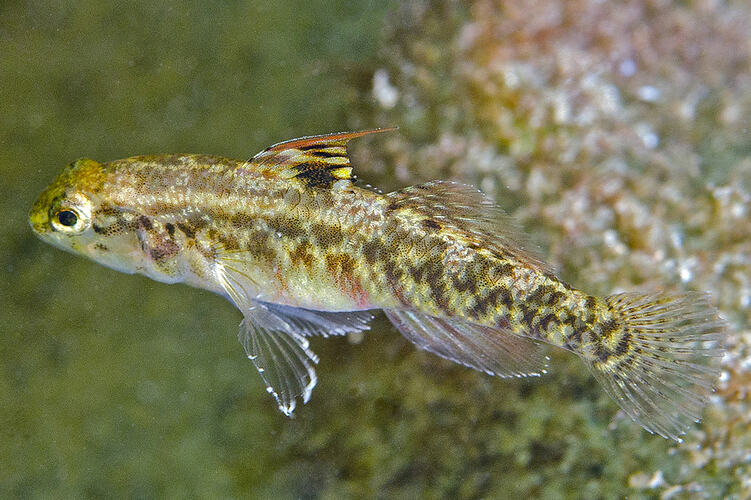General Description
Head and body strongly compressed (narrow from side to side), eyes close together, snout rounded and a large mouth in males. Body is pale brown, with dark mottling above, and five to six diagonal dark brown bands on middle to lower sides, belly pale. First dorsal fin has a large bluish to dark brown spot, second dorsal fin with diagonal bands. Body up to 6 cm.
Biology
Like other gobies, females lay their eggs onto the substrate.
Distribution
Eastern and southern Australia.
Habitat
Found in upper parts of estuaries and lower freshwater parts of coastal rivers and streams, in depths of 0-10 m; in muddy areas and amongst seagrass beds and mangroves.
More Information
-
Animal Type
-
Animal SubType
-
Brief Id
A narrow-bodied fish with a large mouth. Mottled brown with diagonal bars along the sides. Dorsal fin with a large spot.
-
Colours
Brown
-
Maximum Size
6 cm
-
Habitats
-
Diet
Carnivore
-
Diet Categories
Invertebrates
-
Endemicity
-
Commercial
No
-
Depths
Shallow (1-30 m), Shore (0-1 m)
-
Water Column Locations
On or near seafloor
-
Taxon Name
-
Scientific Author
(Günther, 1861)
-
Common Name
Largemouth Goby
-
Kingdom
-
Phylum
-
Subphylum
-
Superclass
-
Class
-
Order
-
Family
-
Genus
-
Species Name
macrostoma

